The percussion cap was developed in the early 1800's. It was a small metal case (cap) containing material, a chemical composition, that would explode when struck.
When loading the firearm, a percussion cap was placed on a nipple located over the priming port or flash hole. When struck by the hammer, the cap was crushed and the chemical composition exploded, igniting the main powder charge in the barrel through a hole in the nipple.
Percussion caps were far more dependable than flintlocks, particularly during stormy weather. They also permitted the development of the first repeating firearms by allowing one trigger and one hammer to discharge multiple barrels.
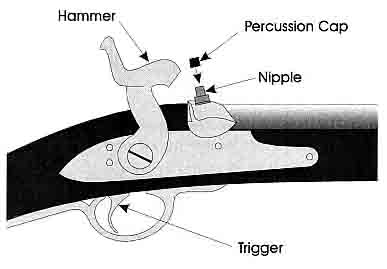
(with acknowledgement to the Department of Justice Canada)
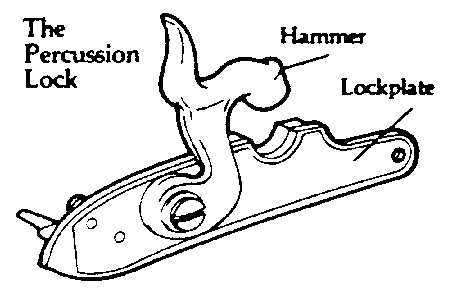
Percussion Locks
"A back-action percussion lock. This style lock in its earliest form dates to 1835-40. Most commonly found on single fowling guns and double barreled shotguns. The back-action lock stayed in use through the entire percussion period and later evolved into widespread use in cartridge shotguns and rifles.
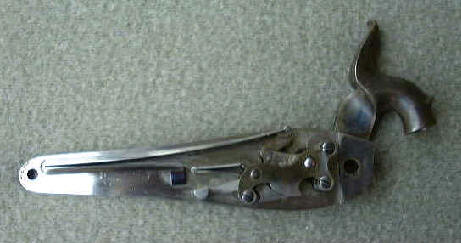
"Notice the following details. 1) a three screw bridal with the sear pivoted on a stud. 2) lock is in the full forward position and the tip of the mainspring protrudes above the lock plate. On a well fitted gun the hammer will contact the nipple just before full forward, thus the spring protrusion is eliminated. When removing locks from a gun, it is always good practice to bring the lock to half cock. By doing so the tip of the mainspring is lowered well inside the lock plate resulting in ample clearance from the lock mortise in the stock.
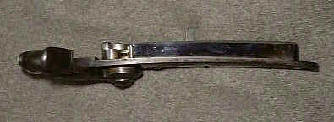
"This lock plate has been arched or curved in order to conform to the wrist proportions desired by the gun maker. The mainspring is also fitted to the curvature of the lock plate.
"Fitting two back action locks into the stock of a double gun requires removal of a considerable amount of wood in the wrist area. Some consider this removal to inherently weaken the stock of such guns.
"A '4 screw' bar lock. Locks of this style and quality reflect the pinnacle in the evolution in percussion locks. Flawless workmanship and artistry in filing and polishing are blended with perfect mechanics and geometry. Truly a meeting of form and function.
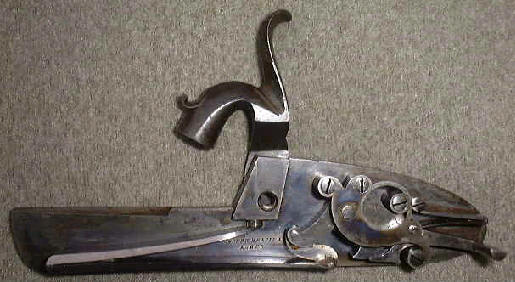
"The tumbler and sear are ghosted, i.e. small bearing shoulders are turned on each side of the respective pieces so that only a small portion of each directly bears on the inside of the lock plate and bridal. Virtually all friction between these parts is eliminated.
"The sear is suspended on a stud between the two rear screws. It is free to pivot because the feet of the bridal are .001 or .002 taller than the thickness of the sear.
"Notice that traces of the casehardening process are still apparent. This makes the various parts glass hard on the surface giving good wear and friction resistance.
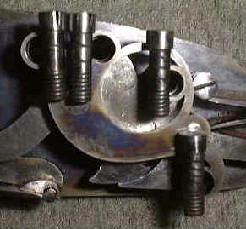
"Above, the bridal screws have been removed from their respective holes. Notice the file slashes on the screw shanks. From the left, one slash then two, etc. Each screw was fitted with regard to overall length, thread length, taper on the shank, and taper on the head. All of this was done while the lock was in the 'white' and unhardened. Finally the lock was disassembled and the parts casehardened. The file slashes are merely a simple way to replace the screws in their fitted hole upon reassembly.
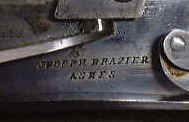
"Joseph Brazier, Ashes identifies the lock maker. Brazier locks are found on almost all high quality arms, he being the premier lock maker of the period. Other Brazier marking are 'I.B.', J. Brazier, and Joseph Brazier Ashes-Wolverhampton. These locks were sold to the trade in the white, unhardened, unpolished but fully functional. Gun makers specified the lock plate shape in some cases.
"The common 2 screw bar lock. This is the type and quality lock found on many 'trade' or 'hardware' guns. These were produced in great quantities in Birmingham England and imported into the U.S. often with the name of the retailer already on them.
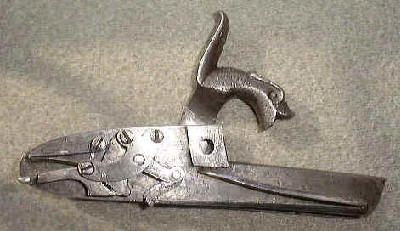
"These locks have the sear pivoted with the rear bridal screw. In this case, the screw cannot be fully tightened because the bridal will bind and retard proper movement of the sear. Often these locks are found with excessive tolerances, indifferent shallow screw threads, improper part relationships, and unhardened.
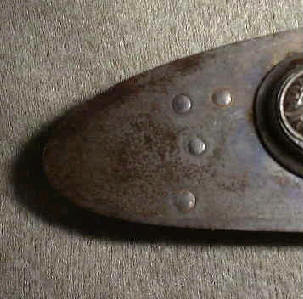
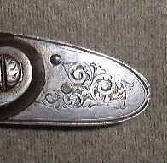
"Above, notice the 4 pins or screw ends on the lock which is unembellished and the 2 pins on the lock which is engraved. Don't be fooled by engraving, these are external views of the locks discussed previously. When looking at a shotgun or rifle as a prospective buyer, the presence of a 4 pin lock is usually accompanied by a name and complete address on the rib or top barrel flat. These factors are good indicators of high quality and superior workmanship."
(with acknowledgement to an article "Overview of gunlocks" by Muzzleloaders Etcetera Inc.)
